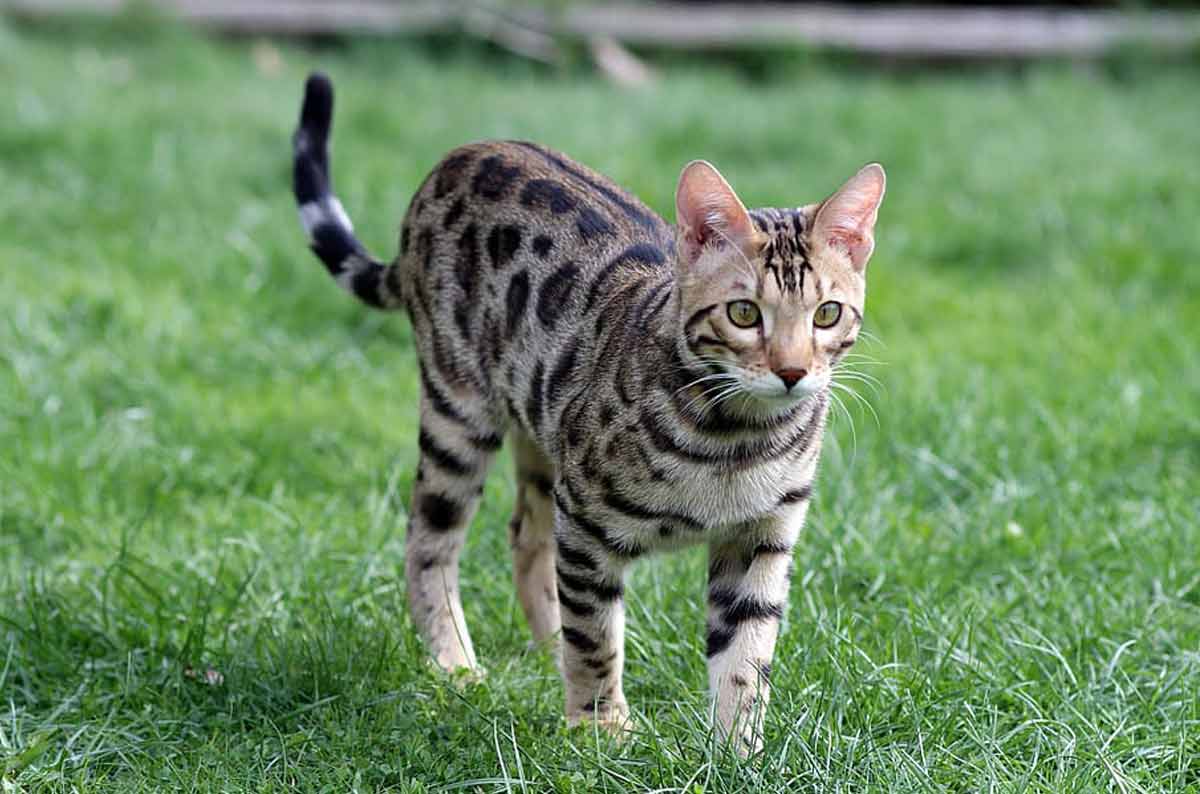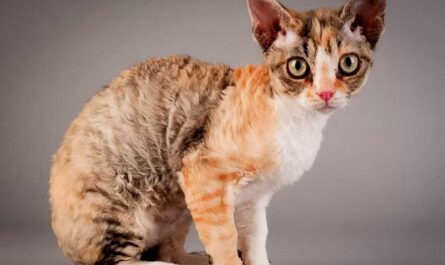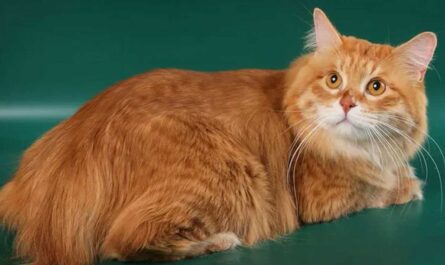1. Understanding Cat Tails: An Insightful Look
A Vital Appendage
In reality, a cat’s tail is far more than just a decorative appendage. It serves a multitude of purposes that are integral to the cat’s overall well-being and survival. From communication to balance, the tail plays a crucial role in the daily life of our feline friends.
Communication Hub
One of the primary functions of a cat’s tail is communication. Through subtle movements and positions, cats can convey a wide range of emotions and intentions to those around them. A raised tail may signal excitement or curiosity, while a twitching tail could indicate agitation or annoyance. Understanding these subtle cues can help us better understand our furry companions.
Balance and Agility
Another essential role of the cat’s tail is in maintaining balance and agility. Whether stalking prey or navigating precarious terrain, a cat relies on its tail to make split-second adjustments and maintain its poise. The tail acts as a counterbalance, allowing the cat to execute acrobatic feats with grace and precision.
Temperature Regulation
Believe it or not, a cat’s tail also plays a role in regulating body temperature. In colder climates, a fluffed-up tail helps to trap heat close to the body, keeping the cat warm and cozy. Conversely, in warmer weather, a relaxed and loosely held tail allows for better airflow, helping the cat stay cool and comfortable.
Expressions of Emotion
Beyond its practical functions, a cat’s tail is also a window into its emotional state. A puffed-up tail may signal fear or aggression, while a gently swaying tail accompanied by a relaxed posture indicates contentment and relaxation. By paying attention to these subtle cues, we can better understand and respond to our cat’s needs.
A Fascinating Enigma
In conclusion, the purpose of a cat’s tail is a multifaceted enigma, encompassing communication, balance, temperature regulation, and emotional expression. While we may never fully unravel all of its mysteries, one thing is certain: the cat’s tail is a vital and intriguing aspect of its being, deserving of our admiration and respect.
Anatomy and Flexibility
When observing a cat’s tail, one cannot help but marvel at its sleek design and fluid movements. This appendage is not merely an afterthought but a marvel of feline anatomy. Comprised of 18 to 23 vertebrae, the tail is an extension of the spine, providing cats with an extraordinary range of motion. This flexibility is crucial for their survival in the wild, allowing them to balance gracefully on narrow surfaces and execute lightning-fast maneuvers during hunting or escaping predators.
Sensory Functions
Beyond its physical prowess, a cat’s tail serves as a sensory powerhouse, enhancing their ability to navigate their environment and communicate with others of their kind. Packed with nerves, muscles, and scent glands, the tail acts as a sophisticated tool for gathering information. When a cat swishes its tail or holds it upright, it’s not merely a random gesture but a form of expression. Through subtle movements, cats can convey a wide range of emotions, from curiosity to agitation, to other felines, and even to their human companions.
Communication and Expression
In the intricate language of felines, the tail plays a pivotal role in conveying messages and establishing social hierarchies. A cat’s tail position can speak volumes about its mood and intentions. For example, a tail held high signals of confidence and contentment, while a puffed-up tail indicates fear or aggression. Similarly, a gently wagging tail suggests curiosity or excitement, while a rapid flicking motion may signal irritation or impatience. By interpreting these subtle cues, cat owners can better understand and respond to their feline friends’ needs and emotions.
Adaptation and Evolution
The evolutionary significance of the cat’s tail cannot be overstated. Over millennia, these creatures have fine-tuned their tails to suit their diverse habitats and lifestyles. From the sleek tails of domestic cats to the bushy appendages of wild felines like tigers and lions, each variation serves a specific purpose. Whether it’s for balance, communication, or camouflage, the tail remains a crucial aspect of feline survival. As humans continue to study and admire these fascinating creatures, the mysteries of their tails continue to unfold, revealing the intricate complexities of nature’s design.
2. The Intriguing Mystery of Cat Tails
Cats possess an intriguing ability to control their tails, an aspect of their anatomy that has long fascinated humans. Unlike many other animals whose tails move primarily as a reflex to external stimuli, cats exhibit a remarkable degree of intentional control over their tail movements. This control allows them to convey a wide range of emotions and intentions through subtle shifts and gestures, making their tails a crucial aspect of feline communication and behavior.
The Complex Connection Between Brain and Tail
At the heart of a cat’s ability to control its tail lies the intricate relationship between its brain and muscular system. When a cat wishes to move its tail, whether to express curiosity, excitement, or agitation, the brain sends precise nerve impulses to the muscles located within the tail. These impulses prompt the muscles to contract or relax in specific patterns, resulting in the desired movement. This process occurs swiftly and seamlessly, allowing cats to adjust their tail positions with remarkable precision and agility. How AI, ChatGPT maximizes earnings of many people in minutes
Exceptions and Quirks: Understanding Cat Behavior
While cats typically maintain conscious control over their tail movements, there are some exceptions and quirks to consider. For example, during periods of deep sleep, cats may experience involuntary twitching or movements in their tails, much like humans might experience during REM sleep. These involuntary motions are not under the cat’s conscious control and are instead thought to be a natural byproduct of the brain’s activity during sleep. However, once the cat awakens and becomes more alert, it regains full control over its tail movements.

3. The Language of Tails: Deciphering Feline Communication
For attentive observers, a cat’s tail can serve as a window into its thoughts and feelings. Each flick, twitch, and curve of the tail can convey subtle nuances of emotion, from contentment and affection to irritation and aggression. By learning to interpret these tail movements alongside other feline body language cues, such as ear position, vocalizations, and facial expressions, humans can gain valuable insights into a cat’s state of mind and better understand its needs and desires. Motivation – Mind – Success – Thinking – Productivity – Happiness
Distinctive Cat Behavior: Tail Positioning
When observing domestic cats, one notable behavior is their tendency to walk with their tails held straight up. Unlike many other animals, such as dogs, who may keep their tails lower or tucked between their legs, cats proudly display their tails in an upright position. This distinctive posture is often associated with their confidence and assertiveness. Whether they are strutting around the house or exploring their outdoor territory, cats often use their tails as a form of communication, signaling their mood and intentions to other animals and humans alike.
Tail Offering for Medical Procedures
Interestingly, some larger cats, such as lions and tigers, have been trained to exhibit a behavior known as “tail offering” during medical procedures. This involves voluntarily presenting their tail to veterinarians or caretakers for tasks such as blood draws or injections. By participating in tail offerings, these big cats can undergo necessary medical procedures without the need for sedation or restraint, reducing stress and potential risks associated with anesthesia. This cooperative behavior highlights the remarkable intelligence and adaptability of these majestic creatures. Business – Money Making – Marketing – E-commerce
The Cat-Righting Reflex: More Than Just Tails
While tails play a significant role in a cat’s balance and agility, they are not the sole factor responsible for the “cat-righting reflex.” This instinctive ability allows cats to twist their bodies in mid-air to land on their feet after falling or being dropped. While their tails help with stabilization, cats also rely on their flexible spines, powerful muscles, and keen sense of spatial awareness to execute this remarkable feat. Through a combination of reflexes and innate coordination, cats demonstrate their remarkable ability to adapt to their environment and navigate challenging situations with grace and precision.
4. The Importance of a Cat’s Tail
A cat’s tail serves multiple essential functions, each contributing to its overall well-being and behavior. Health books, guides, exercises, habits, Diets, and more
Balance and Agility
One of the most crucial roles of a cat’s tail is its function in maintaining balance and facilitating agile movements. Acting as a counterbalance, the tail adjusts with every leap and twist, enabling the cat to land precisely and gracefully. Whether navigating narrow surfaces or making sharp turns, the tail plays a pivotal role in ensuring the cat’s stability and coordination.
Communication through Body Language
Beyond its physical utility, a cat’s tail serves as a sophisticated tool for communication through nuanced body language. Various tail movements convey a range of emotions and intentions, allowing cats to express themselves effectively. A gentle swish signifies contentment and happiness, while vigorous thrashing indicates annoyance or a need for space. Additionally, different tail positions, such as a straight-up posture denoting confidence or fear, provide insight into the cat’s state of mind. Fitness – Meditation – Diet – Weight Loss – Healthy Living – Yoga
Marking Territory and Scent Communication
Scent glands located in a cat’s tail enable it to mark territory and communicate with other cats through scent. By rubbing their tails against objects or surfaces, cats leave behind pheromones that serve as territorial markers and social signals within their community. This form of olfactory communication is vital for establishing boundaries, affiliations, and hierarchies among cats.
Thermal Regulation
Furthermore, a cat’s tail plays a role in thermoregulation, particularly during periods of rest. When curled around its body during sleep, the tail helps conserve body heat, ensuring comfort and warmth in varying environmental conditions. This adaptive mechanism is especially valuable for cats living in colder climates or exposed to chilly temperatures. RPM 3.0 – 60% CONVERSION & Money for Affiliate Marketing
Adaptations and Resilience
Despite being vulnerable to injuries due to their mobility and exposed nature, cat tails demonstrate remarkable adaptability and resilience.
Tailless Breeds and Balance
Tailless breeds like the Manx have evolved to cope with the absence of a traditional tail, developing alternative strategies to maintain balance and agility. Through adjustments in posture and muscle coordination, these cats demonstrate comparable levels of grace and mobility, showcasing the remarkable adaptability of feline anatomy. Cat accessories on Amazon
Sensitivity and Boundaries
Finally, it’s essential to recognize and respect the sensitivity of a cat’s tail.
Avoiding Tail Touching
Due to its significance in communication and balance, most cats are sensitive about their tails and dislike being touched in this area. Understanding and respecting this boundary is crucial for maintaining a positive and trusting relationship with feline companions. By observing their body language and preferences, we can foster a harmonious interaction with our cats while appreciating the intricate role of their tails in their lives.




